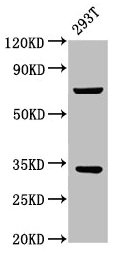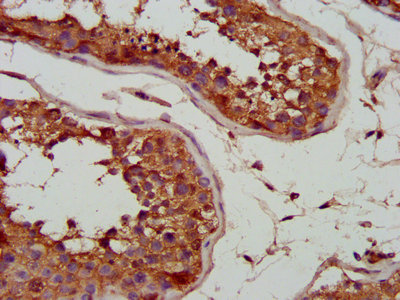ADP:ATP antiporter that mediates import of ADP into the mitochondrial matrix for ATP synthesis, and export of ATP out to fuel the cell. Cycles between the cytoplasmic-open state (c-state) and the matrix-open state (m-state): operates by the alternating access mechanism with a single substrate-binding site intermittently exposed to either the cytosolic (c-state) or matrix (m-state) side of the inner mitochondrial membrane. In addition to its ADP:ATP antiporter activity, also involved in mitochondrial uncoupling and mitochondrial permeability transition pore (mPTP) activity. Plays a role in mitochondrial uncoupling by acting as a proton transporter: proton transport uncouples the proton flows via the electron transport chain and ATP synthase to reduce the efficiency of ATP production and cause mitochondrial thermogenesis. Proton transporter activity is inhibited by ADP:ATP antiporter activity, suggesting that SLC25A5/ANT2 acts as a master regulator of mitochondrial energy output by maintaining a delicate balance between ATP production (ADP:ATP antiporter activity) and thermogenesis (proton transporter activity). Proton transporter activity requires free fatty acids as cofactor, but does not transport it. Probably mediates mitochondrial uncoupling in tissues that do not express UCP1. Also plays a key role in mPTP opening, a non-specific pore that enables free passage of the mitochondrial membranes to solutes of up to 1.5 kDa, and which contributes to cell death. It is however unclear if SLC25A5/ANT2 constitutes a pore-forming component of mPTP or regulates it. Acts as a regulator of mitophagy independently of ADP:ATP antiporter activity: promotes mitophagy via interaction with TIMM44, leading to inhibit the presequence translocase TIMM23, thereby promoting stabilization of PINK1. As part of the mitotic spindle-associated MMXD complex it may play a role in chromosome segregation.








